| HOME |
|---|
HERCULES
The Strongman

Hercules - Celestial Atlas by Alexander Jamieson - 1822
| HOME |
|---|

To the Greeks he was Heracles, to the Romans, Hercules. He was the great grandson of the hero Perseus, and the son of Zeus (Jupiter), king of the gods, and the mortal woman Alcamene. Hercules displayed extraordinary strength from an early age, playing a part in many ancient legends, most notably the expedition of Jason and the Argonauts, and the famous Twelve Labours of Hercules.
Hera, the wife of Zeus, had no love for Hercules, the fruit of her husband's infidelity, and caused him to go insane and murder his family. The twelve labours were imposed on Hercules as a penance for this crime, and three of those labours have constellations of their own in the sky. The first required feat of Hercules was the killing of the Nemean Lion, represented by the constellation Leo. The second was the killing of the many headed sea monster, the Lernaean Hydra, represented by the constellation Hydra. And the eleventh labour was stealing the golden apples of the Hesperides, and vanquishing the dragon, Ladon, that guarded them, represented by the constellation Draco. Hercules is historically pictured in the sky kneeling over the head of the defeated dragon with club raised.
Hercules is one of our oldest constellations, known as The Kneeling One, or The Man On His Knees, since the time of Plato and Hipparchus. The constellation is easily recognized by the strong square of stars at its centre, representing the lower torso of the figure, commonly known as The Keystone of Hercules. The figure of the strongman is always depicted on his knees, upside down in the sky.
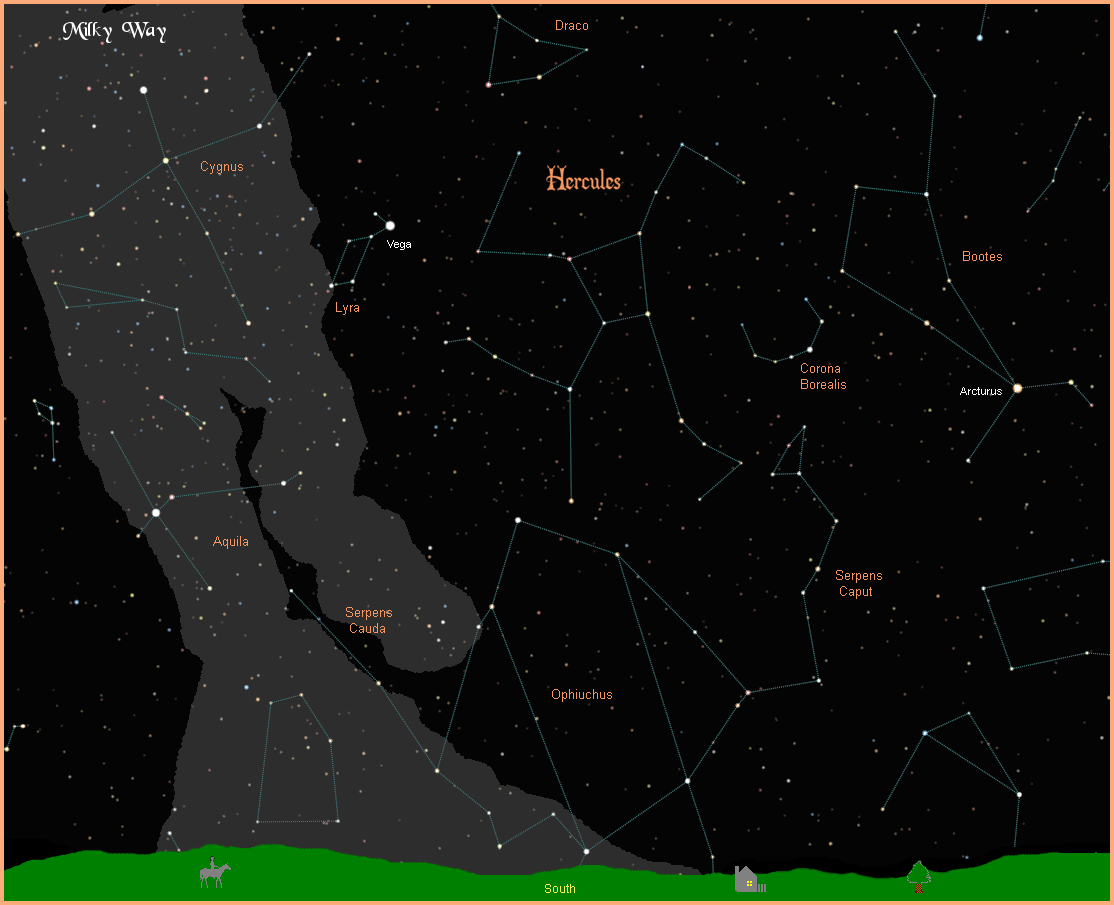
The alpha star in Hercules is not the brightest star in the constellation, but designated alpha because it represents the head of the figure. It is named Ras Algethi, from the Arabic for the head of the kneeler. The star is a true supergiant, with a diameter larger than the orbit of Mars. Classified as an M5I red supergiant it shines at magnitude 2.78. There is a binary system in a wide 55 billion mile (550 AU) orbit around the red giant, making Rasalgethi a triple star system, all located about 360 light years away.
Beta Herculis has the name Kornephoros, which seems to have come from the original Greek name for the figure, before it took on the persona of their hero Heracles. Representing the right shoulder of the figure, it is a G7III yellow giant, and at magnitude 2.78 the brightest star in the constellation. There is spectroscopic evidence of a small companion.
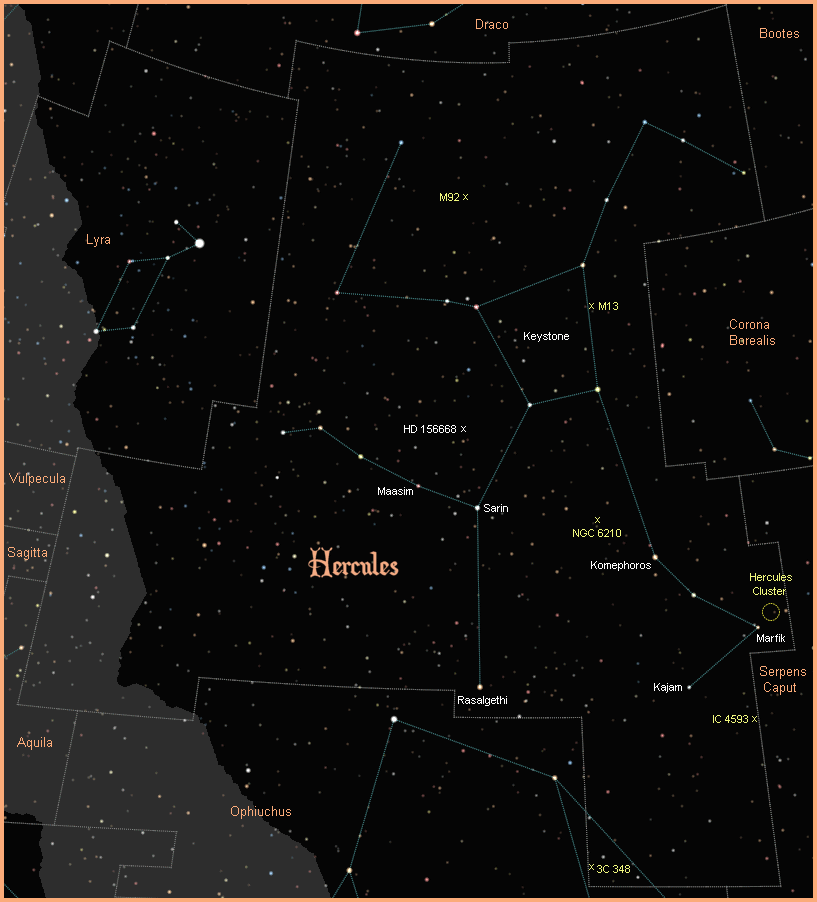
Down from the shoulder we find Kappa Herculis, named Marfik, from the Arabic for elbow. Through a telescope Marfik splits into two almost identical stars, not a binary system but a serendipitous line of sight alignment. The slightly brighter of the pair, Kappa Herculis A, is a G7III yellow giant, about 388 light years away, and its partner is a K1 yellow/orange giant, almost a hundred light years further away at a distance of 470 light years. The two stars have a combined visual magnitude of 5.0.
Up at the end of the figure's arm is Omega Herculis, named Kajam, or "Cujam", from the Latin for club. It is a B9p blue main sequence star, the appended "p" for "peculiar", as the star has unusual chemical and magnetic properties. It is about 250 light years away with a magnitude of 4.57.
Moving over to the figure's left shoulder is Delta Herculis, named Sarin, another star name whose origins seem to have been lost to time. At magnitude 3.12 it ranks as third brightest star in the constellation. It is a very close binary system of two very similar stars, an A3V white main sequence star, and an F0V yellow/white main sequence star. They are about 79 light years away.
Lambda Herculis is named Maasym, Arabic for wrist, mistakenly placed (according to Allen), by Bayer. It is a K3III orange giant, with a magnitude of 4.41, and is about 370 light years away.
There are fifteen stars in Hercules that are known to support planetary systems. All of these stars are beyond naked eye visibility, and host gas giant planets unlikely to support life - except one. A star designated HD 156668 has a planet 100 times smaller than Jupiter, which makes it only three times more massive than Earth. A planet this size is known as a Super Earth, which is much more interesting than the usual gas giant exoplanet, especially in the hunt for extraterrestrial life. The star is a K3V orange main sequence star, about 78 light years away with a magnitude of only 8.42, so you will need a telescope to find it. For more information on these and other extrasolar planets, visit NASA's New Worlds Atlas, and The Open Exoplanets Catalogue.
When you turn a telescope on Hercules, the first thing to point it at is M13 (NGC 6205), the largest and brightest globular star cluster in the northern sky. M13 is 22,000 light years away, 145 light years in diameter, and estimated to contain about 300,000 stars. At magnitude 5.8 you can find it with your naked eye on a dark night, a third way down the west side of the "square", or Keystone. M13 is a truly inspiring sight through a small telescope, and through the eyes of Hubble, it's breathtaking.
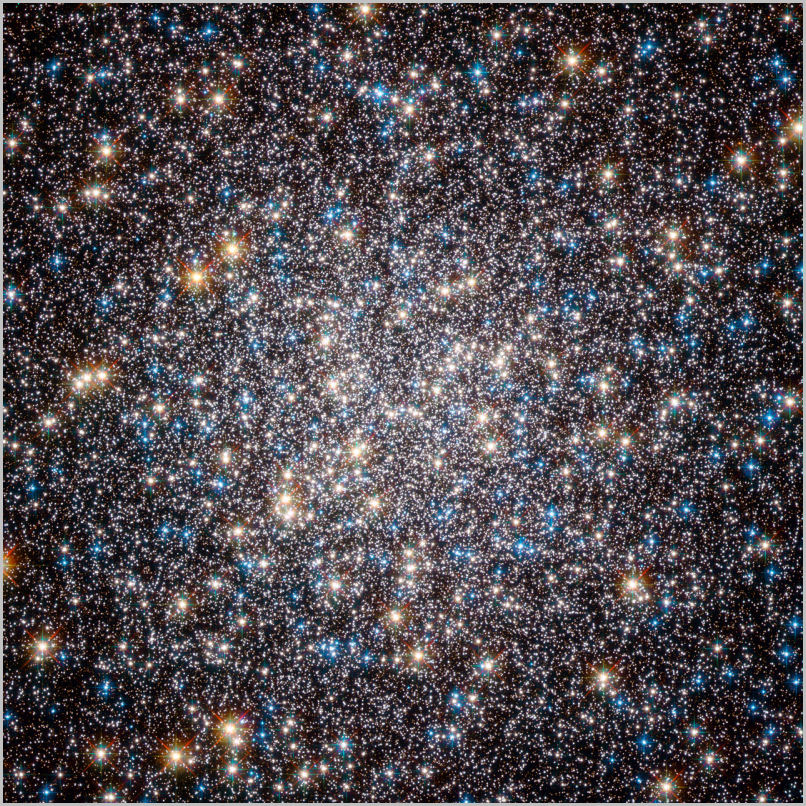
A little further away at 26,000 light years, and a little dimmer at magnitude 6.5, is another globular cluster, M92 (NGC 6341).
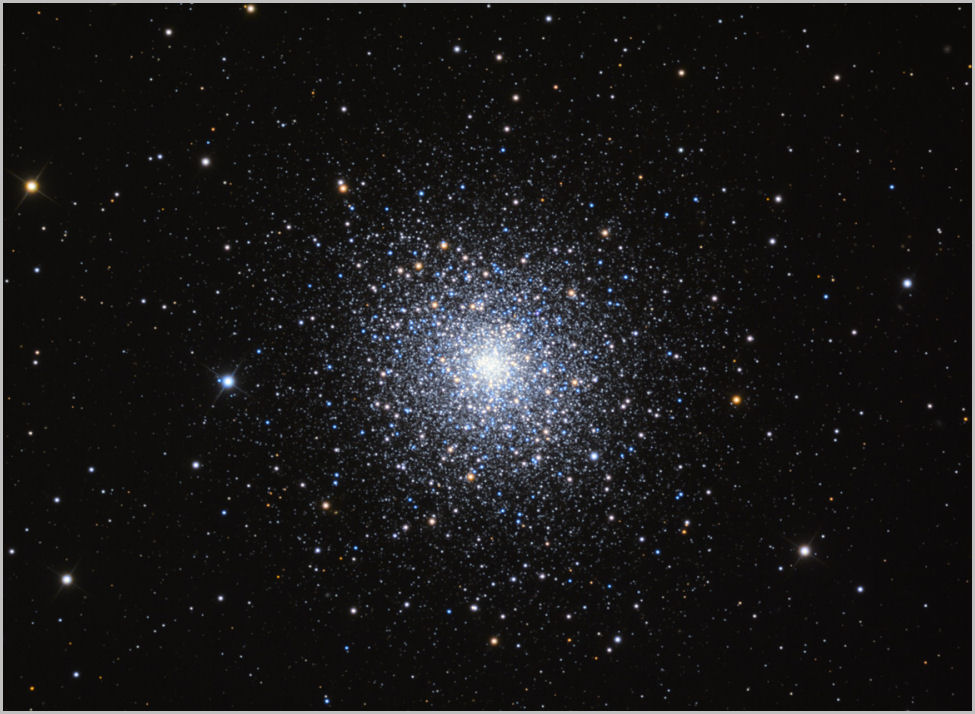
Historically referred to as planetary nebulae, these cosmic phenomena have nothing to do with planets, but simply their planet-like shape through small telescopes. They are shells of expanding gas generated by stars that have used up their nuclear fuel and are shedding their outer layers, on their way to becoming small, dense white dwarfs. Planetary nebula NGC 6210 is 6,500 light years away. At a magnitude of 9.7, it is discernible in a backyard telescope as a small, blue-green disk. Through the eyes of Hubble, its true colourful, chaotic nature is revealed.
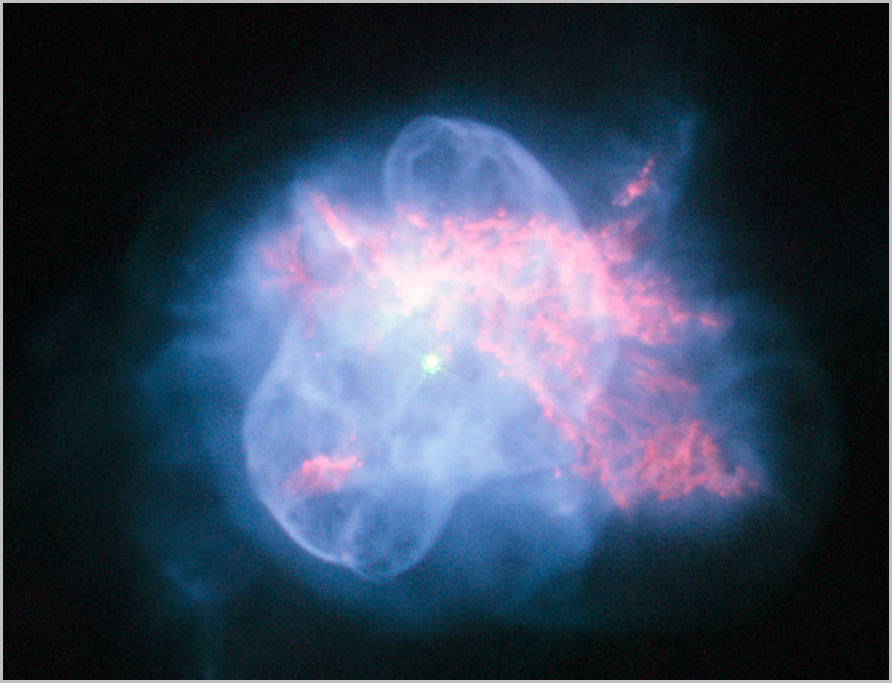
At a distance of 7000 light years, and with a magnitude of 11.0, the planetary nebula IC 4593 is much harder to find in a small scope. Once again, we turn to the large space telescopes to see its real glory, including powerful orange jets of highly energised particles shooting out along the axes of the dying star.
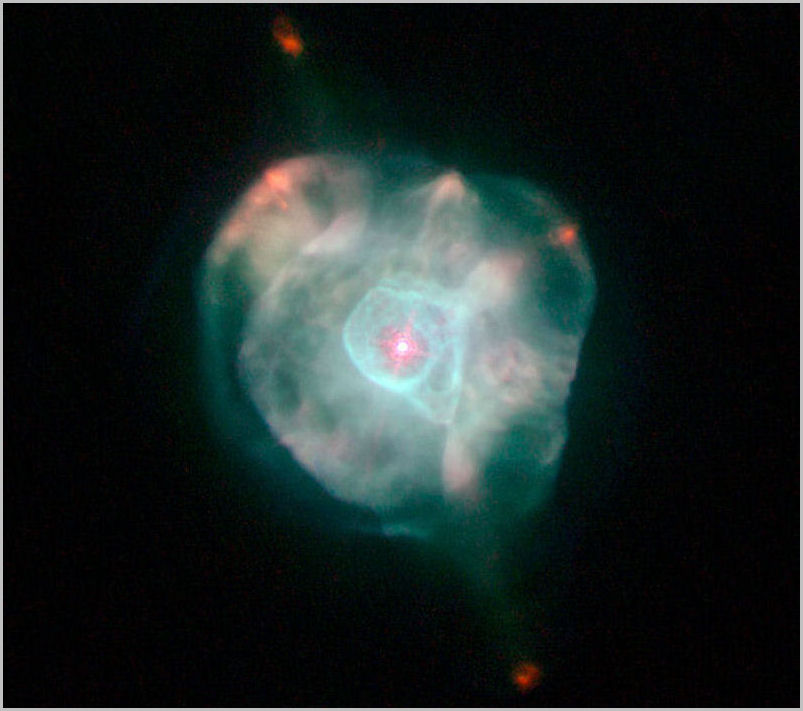
The Hubble Space Telescope's image of elliptical galaxy Hercules A (3C 348) dramatically shows the effects of a really big black hole. At the centre of this galaxy there is a supermassive black hole a thousand times more massive than the powerful black hole at the centre of our Milky Way galaxy. The energy of this black hole is shooting out jets of energised particles at almost the speed of light that are condensing into immense clouds of gas. The clouds are estimated to be a mind boggling one-and-a-half million light-years wide. Fortunately, all this mayhem is happening a nice, safe 2 billion light years away.
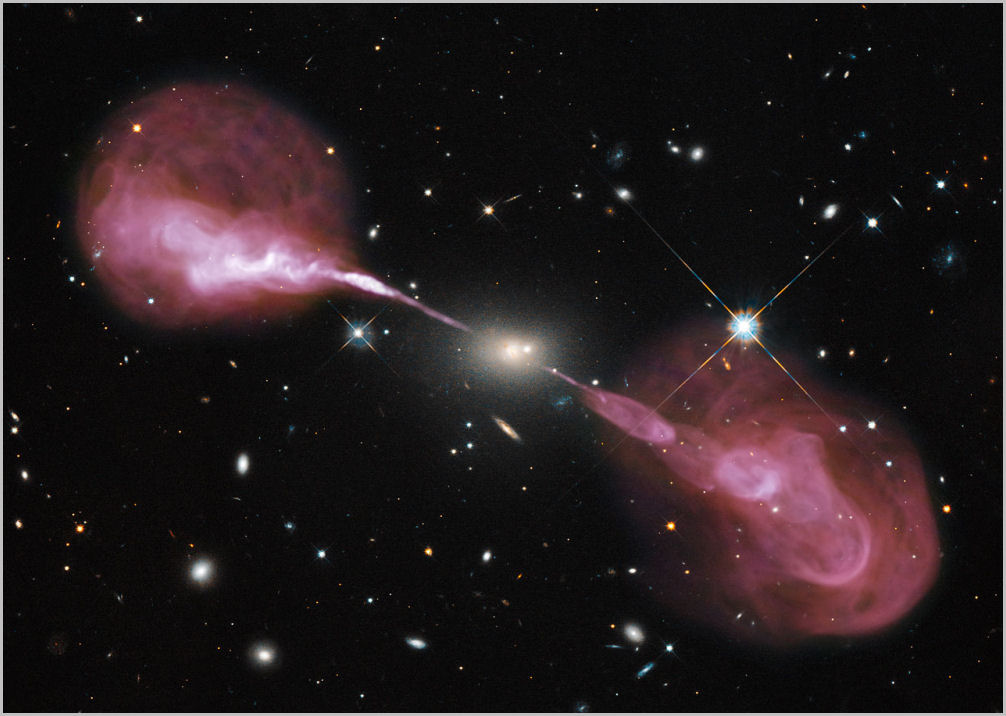
About 450 million light years away, on the western edge of the constellation, we find the Hercules Galaxy Cluster (Abell 2151), a grouping of about 200 galaxies crowded so close together a large number of them are colliding and merging.
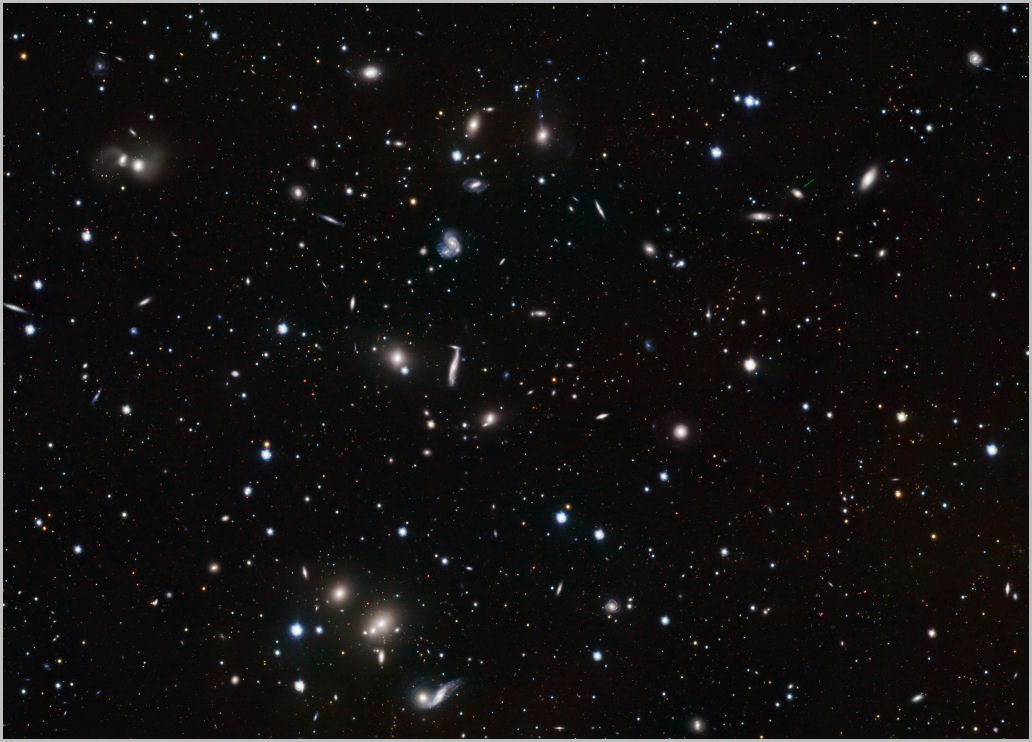
The merging galaxies NGC 6050 and IC 1179 are forming a new entity named Arp 272 deep inside the Hercules Galaxy Cluster, 450 million light years away.
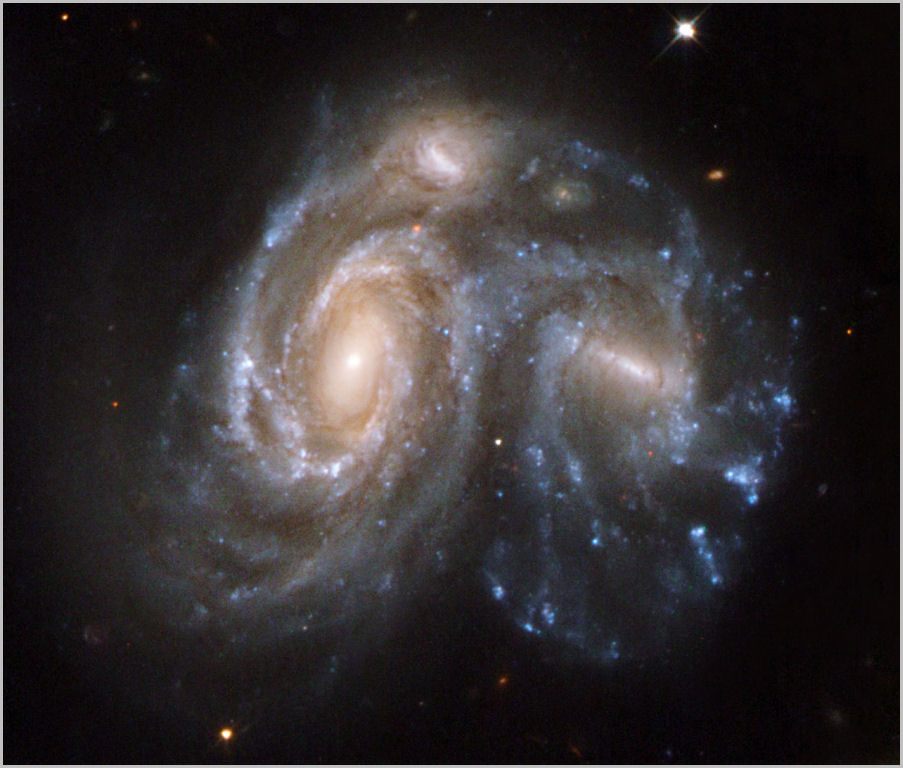
|
|
|
|
|
|